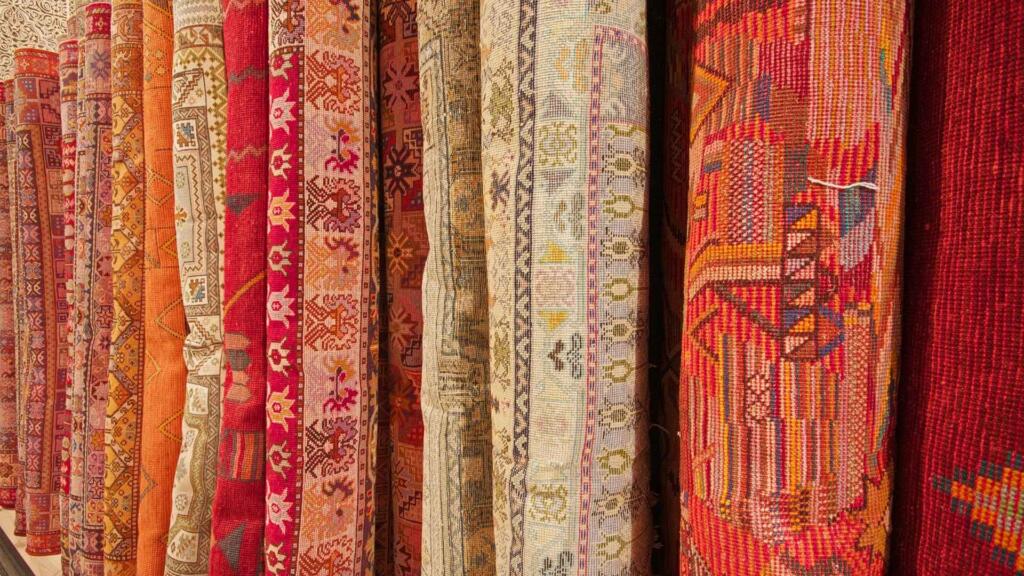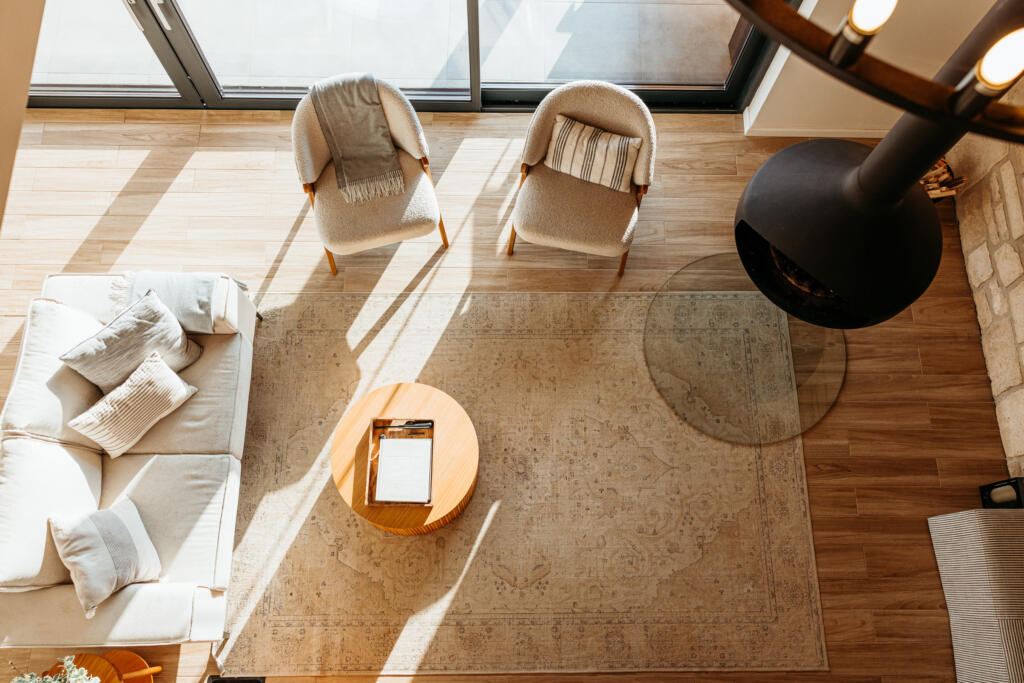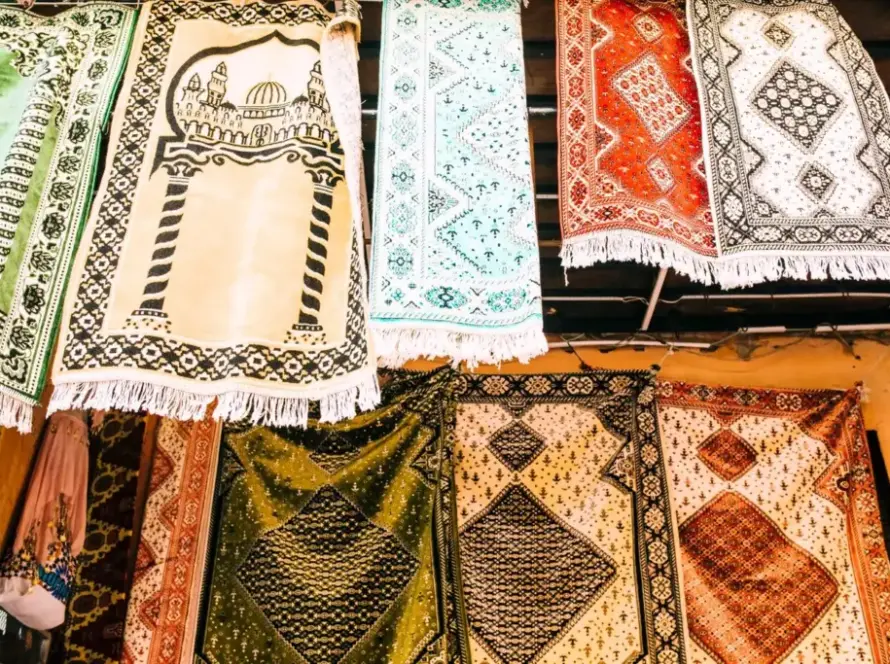
When it comes to choosing a rug that will stand the test of time, durability is a top consideration. Wool rugs are widely recognized for their longevity due to their natural resilience and ability to withstand daily wear and tear. Synthetic rugs, particularly those made from nylon or polypropylene, also offer significant durability and are often resistant to stains and fading.
In addition to material, the construction of the rug plays a critical role in its lifespan. Hand-tufted rugs and woven rugs tend to outperform more loosely woven varieties, making them better suited for high-traffic areas. Understanding these factors can help in selecting the most Durable rug that not only complements the décor but also lasts for years to come.
Investing in the right rug can elevate a space while also ensuring practicality. By focusing on materials and construction techniques, one can make a more informed decision, ultimately leading to a purchase that offers both beauty and enduring quality.
Materials used in Durable Rugs
Durability in rugs primarily stems from the materials used in their construction. Understanding the differences between natural and synthetic fibers, along with assessing wear and tear resistance, is crucial for selecting a long-lasting rug.
Natural vs Synthetic Fibers
Natural fibers, such as wool and cotton, are known for their durability and resilience. Wool rugs, particularly hand-knotted ones, can withstand heavy foot traffic and resist stains naturally due to their lanolin content.
Cotton is softer but less durable than wool, often suitable for low-traffic areas. Other natural options, like jute and sisal, offer excellent durability but may require more maintenance for cleanliness.
Synthetic fibers, including nylon and polyester, provide high resistance to wear and tear. They are often less expensive and easier to clean, making them popular choices for families and pets. While synthetic rugs may not have the same aesthetic appeal as natural fibers, they excel in durability when properly cared for.
Assessing Wear and Tear Resistance
Durability also involves assessing how materials respond to wear and tear. High-quality fibers tend to maintain their appearance over time. Rug density is a key factor; higher density generally indicates greater durability.
Shedding can also signal a rug’s lifespan. Hand-knotted rugs usually shed less, while some machine-made varieties might shed significantly.
Resistance to staining and fading further impacts durability. Natural fibers like wool typically resist stains better than many synthetics. Additionally, UV stability is crucial for rugs exposed to sunlight.
Investigating the weight and backing of a rug can also provide insights into its expected longevity. Overall, thorough research into materials and construction will guide buyers to a durable choice.
Popular Rug Types for Longevity
When considering rugs that withstand the test of time, several options come into play. The following details the characteristics of popular rug types known to last long, each with unique features and benefits.
1. Hand Knotted Carpets
Hand knotted carpets are among the most durable options available. They are crafted by skilled artisans who tie individual knots to create intricate designs. This method results in a dense and sturdy fabric, making them resistant to wear over time.
Benefits include:
- Longevity: With proper care, hand knotted carpets can last for decades or longer.
- Unique Designs: Each piece is unique, showcasing various patterns and colors that reflect artistry.
- Natural Fibers: Often made from wool or silk, they are not only strong but also naturally stain-resistant.
Investing in a hand knotted carpet is often advisable due to its lasting quality and character.
2. Tufted Rugs
Tufted rugs are known for their softness and luxurious feel. These rugs are made by punching strands of yarn through a base material, resulting in a plush surface. While they may not last as long as hand knotted options, they can still be a practical choice.
Key attributes include:
- Comfort: Tufted rugs are soft underfoot, making them popular for living rooms and bedrooms.
- Varieties of Carpet Design 2024: They come in a wide range of colors and patterns to suit modern décor needs.
- Maintenance: Regular vacuuming helps maintain their appearance, although they may require more frequent care compared to hand knotted varieties.
Choosing tufted rugs can be ideal for those valuing comfort alongside adequate durability.
3. Woven Rugs
Woven rugs are crafted through a loom, resulting in strong and resilient textiles. This method of production creates a tight weave that enhances durability, making these rugs particularly long-lasting.
Main features are:
- Versatility: They are available in various materials, including wool, cotton, or synthetic fibers.
- Durability: The construction lends itself to heavy foot traffic, making woven rugs suitable for any area in the home.
- Easy to Clean: Many woven options are straightforward to maintain, helping them look new longer.
Woven rugs are an excellent option for anyone needing a rug that combines durability and ease of upkeep.

Considerations for Rug Placement
Rug placement is essential for maximizing durability and enhancing the aesthetic of a space. Understanding usage patterns and selecting the right size can significantly affect the longevity of a rug.
Choosing Rugs Based on Usage
The intended use of the space shapes rug selection. High-traffic areas, like living rooms or entryways, benefit from durable materials such as nylon or polypropylene. These fibers resist stains and wear, making them ideal for homes with kids or pets.
For less busy spaces, such as bedrooms, softer wool or silk rugs can enhance comfort. While they may have a shorter lifespan in active areas, their luxurious feel adds value to quieter rooms.
Consider the maintenance level needed for each rug type. For example, looped rugs may hide dirt well but can be harder to clean than cut pile options. Always choose a rug that corresponds with the specific demands of the space.
Appropriate Rug Sizes
Selecting the right size is crucial for functionality and style. In living rooms, a common guideline is to choose a rug that allows front legs of furniture to sit on it.
Example Sizes:
- For small living rooms: 5×8 feet
- For average living rooms: 8×10 feet
- For large living rooms: 9×12 feet or larger
In dining areas, a rug should extend beyond the chairs to ensure they remain on the rug when seated. Aim for at least 24 inches beyond the table’s edges.
Using a visual guide or measuring space can assist in selecting the optimal size for any room. A well-placed rug not only enhances aesthetics but also contributes to its overall lifespan.
Rug Maintenance and Care
Proper maintenance and care significantly extend the life of rugs. Regular cleaning and professional care are essential for preserving quality and aesthetics while preventing damage.
Regular Cleaning Techniques
Maintaining a regular cleaning schedule is crucial. Vacuuming rugs at least once a week helps remove dirt and debris that can wear fibers down over time. Use a vacuum with a high pile setting for shag or plush styles to avoid pulling fibers.
For spills, immediately blot with a clean cloth, never rub, to prevent spreading.
Spot Clean: Use a mild detergent mixed with water for stains. Test in an inconspicuous area before applying it broadly.
Rotate Regularly: To ensure even wear, rotate the rug every six months.
Keeping rugs away from direct sunlight minimizes fading. Using rug pads can also protect the backing and keep the rug in place.
Professional Rug Care
Engaging a professional service for deep cleaning can enhance a rug’s longevity. It is recommended every 1-2 years, depending on usage. Professionals use techniques like steam cleaning and specialized solutions that penetrate deeply without damaging fibers.
Identify Quality Care: Look for cleaners experienced with specific rug materials, such as wool or silk.
Repair Services: Many professionals also provide repair, addressing frayed edges or worn spots.
Understanding how to care for different types of rugs can influence their lifespan. Quality rugs can last anywhere from 10 to 50 years or more with proper care. By prioritizing professional cleaning and repairs, rugs can maintain their condition for decades.
Industry and Design Trends
The rug industry is seeing notable advancements in manufacturing techniques and shifts in design aesthetics. These changes reflect consumer preferences and innovations aiming for durability and style.
Innovations in Rug Manufacturing
Manufacturers are adopting advanced materials and production methods to enhance durability. Synthetic fibers, such as nylon and polyester, are becoming popular due to their resistance to stains and fading. Eco-friendly materials, including recycled plastics and natural fibers like jute, are also gaining traction, appealing to environmentally conscious consumers.
Technology is playing a critical role as well. Digital printing allows for intricate designs that traditional methods may struggle to replicate. Furthermore, innovations like treatments for water and stain resistance extend the lifespan of rugs.
Key Innovations:
- Synthetic Fibers: Enhanced durability and easy maintenance.
- Eco-Friendly Options: Sustainable and attractive materials.
- Digital Printing: Complex designs made attainable.
Interior Design Trends
In 2024, interior design trends emphasize bold colors and unique textures, making rugs a focal point in various spaces. Geometric patterns, abstract designs, and rich, earthy tones are trending. These styles complement minimalist and bohemian interiors alike.
Layering rugs is also popular, adding depth and interest to room design. Mixing and matching different textures, like a plush rug over a flatweave, creates a visually pleasing contrast.
Trending Styles:
- Geometric Patterns: Modern and striking.
- Earthy Tones: Warm and inviting.
- Layering: Adds texture and dimension.
These design trends reflect a blend of aesthetics and practicality, ensuring rugs not only boost visual appeal but also endure wear over time.
Rug Manufacturers and Wholesalers
Identifying reliable rug manufacturers and wholesalers is essential for sourcing durable and high-quality rugs. The right supplier can significantly affect the longevity and appearance of the products.
Identifying Quality Manufacturers
When searching for quality rug manufacturers, certain factors are crucial. It is important to evaluate their production processes, material sourcing, and craftsmanship. Manufacturers like Shivalika Rugs are notable for their wide range of offerings, including hotel carpets and washable rugs.
Key indicators of quality include:
- Material Quality: Look for durable fabrics such as wool or synthetic blends.
- Production Techniques: Manufacturers using traditional weaving methods typically produce longer-lasting rugs.
- Certifications: Checking for industry certifications can indicate compliance with quality standards.
Inquiring about warranties and return policies further reflects a manufacturer’s commitment to quality.
Global Rug Suppliers
Global suppliers play a critical role in the rug market, providing diverse options for various needs. Shivalika Rugs stands out as a comprehensive carpet wholesaler in India, known for their extensive range, including faux fur and PVC floor carpets.
Benefits of working with global suppliers include:
- Variety of Styles: Access to various styles and patterns to suit different preferences.
- Competitive Pricing: Global competition can lead to better pricing structures.
- Faster Shipping: Many suppliers offer efficient logistics, ensuring timely delivery.
Partnering with recognized global suppliers can help in sourcing quality carpets that meet durability requirements.




